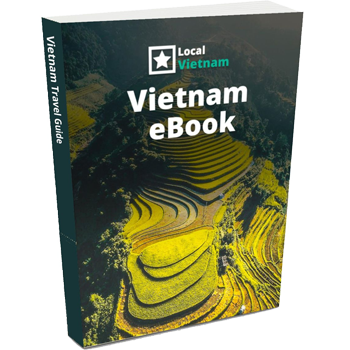About Binh Phuoc
Located in southern Vietnam, Binh Phuoc is the largest province in the region, bordering Cambodia. Its capital, Dong Xoai, serves as the province’s administrative and transportation hub. Historically, the area played a role during the Vietnam War, with remnants of that time still visible today.
Today, Binh Phuoc is best known for its vast rubber plantations, pepper farms, and natural attractions like Bu Gia Map National Park. While not as touristy as other provinces, it offers opportunities for off-the-beaten-path exploration. Dong Xoai, with its growing infrastructure, is a convenient base to explore the province and its surroundings.
Is Binh Phuoc worth to visit?
Binh Phuoc might not be the first destination that comes to mind when planning a trip to Vietnam, but it has its own unique charm. The province offers opportunities for nature lovers, including treks in Bu Gia Map National Park and visits to rural communities that showcase local traditions. However, travelers seeking bustling cities or famous landmarks may find things to do in Binh Phuoc limited. Its appeal lies in its tranquility and the chance to explore less touristy areas, but it might not be a must-see for everyone.
Best time to visit Binh Phuoc
Binh Phuoc is located in southern Vietnam, sharing similar weather patterns with Ho Chi Minh City and the Mekong Delta. The region experiences a tropical climate with two main seasons: the dry season and the rainy season.
The best time to visit Binh Phuoc is during the dry season, which runs from November to April, with December to February offering the most pleasant weather. During this time, you can expect sunny days and cooler temperatures, ideal for outdoor activities like trekking and exploring rural areas.
The rainy season, from May to October, brings heavy downpours and high humidity. While the rain can add a lush charm to the scenery, it might make some outdoor activities less accessible.
How to travel to Binh Phuoc
Binh Phuoc’s main transportation hub is Dong Xoai, located about 3–4 hours by road from Ho Chi Minh City. This city is the best place to start your journey into the province, offering connections to rural areas and attractions like Bu Gia Map National Park.
Flights to Binh Phuoc
Binh Phuoc does not have its own airport. The nearest airport is Tan Son Nhat International Airport in Ho Chi Minh City, which is well-connected to major cities in Vietnam and international destinations. From the airport, you can reach Binh Phuoc by bus, private car, or motorbike, with a travel time of approximately 3–4 hours.
Bus options
Binh Phuoc is accessible by bus from Ho Chi Minh City and other nearby provinces. Buses are a convenient and affordable way to travel, with travel times ranging from 3 to 5 hours depending on the route and service type.
Travel tip: Explaining bus travel in Vietnam
Vietnam has an extensive bus network, offering options for every budget and comfort level:
- Sleeper Buses: Ideal for long distances to save daytime hours, though not everyone finds them comfortable. VIP sleeper buses are more luxurious and cost just slightly more.
- Daytime Buses: Many sleeper buses operate during the day as well. Limousine vans are a premium option with comfortable seats and a small number of passengers, offering a more relaxed experience.
Learn more about bus travel and how to book tickets here.
Private car with driver
Renting a private car with a driver offers the most flexibility and convenience. This option allows you to stop at scenic spots along the way and use the car for local exploration after arriving in Binh Phuoc. Although it’s the most expensive option, it’s perfect for travelers who value comfort and freedom.
Learn more about renting a car with a driver here.
Driving motorbike
For adventurous travelers, driving a motorbike to Binh Phuoc can be an exciting experience. However, be prepared for Vietnam’s challenging road conditions and ensure you have the appropriate license and safety gear. This option is best for those familiar with riding in Southeast Asia or confident in navigating busy and rural roads.
Binh Phuoc Travel tips
How long to stay here?
Many travelers simply pass through the province on their way to the Central Highlands, making only brief stops along the way. If you want to enjoy some short hikes in Bu Gia Map or explore the area’s natural beauty more thoroughly, consider adding an extra day to your itinerary. This allows for a more relaxed pace and a deeper appreciation of what the province has to offer.
What to prepare
- Essentials: As Binh Phuoc is less touristy and more remote in certain areas, ensure you bring all your necessities, including medications and toiletries, as options might be limited.
- Cash: Many local places only accept cash, and ATMs may not be readily available in rural areas, so plan accordingly.
- Outdoor Gear: If you plan to explore the national park or rural areas, pack comfortable walking shoes, insect repellent, and sunscreen. Sunscreen options in Vietnam can be limited and expensive.
- Appropriate Clothing: Lightweight clothes for hot weather, but also something for cooler evenings if you’re in higher altitudes or visiting during the dry season.
Getting around Binh Phuoc
Taxi
Taxis are available in Dong Xoai for short trips within the city. Use reliable brands like Mai Linh or Vinasun to avoid scams. For exploring attractions further afield, taxis are not ideal due to high costs and limited availability outside the city.
Car with driver
A car with a driver is an excellent option for sightseeing around the province. With a fixed itinerary and pre-agreed pricing, this offers convenience and comfort. Drivers typically wait at each stop, but don’t expect them to double as guides. English proficiency may be limited, so clear communication about your plans is essential.
Driving motorbike or scooter
Renting a scooter is a great way to explore at your own pace, especially in rural areas. Rental shops and some homestays or hotels can arrange rentals. While police rarely check licenses, having a valid license and experience is recommended for safety. Avoid attempting to learn to ride here, as even quieter areas can be challenging for beginners.
Where to go next
- Ho Chi Minh City: Just a few hours away, this bustling metropolis offers vibrant nightlife, culture, and history.
- Tay Ninh: Known for the Cao Dai Temple and its unique religion, Tay Ninh is an interesting stop.
- Dong Nai: A province with stunning natural attractions like Cat Tien National Park, perfect for wildlife enthusiasts.
- Central Highlands: For more nature and cultural experiences, head further north to Buon Ma Thuot or Da Lat.
Things to do in Binh Phuoc
Binh Phuoc, a lesser-known destination in Vietnam, offers travelers breathtaking natural beauty, historical sites, and cultural experiences. Known for its many waterfalls and pristine landscapes, this province is a haven for nature lovers and adventurers alike.
1. Bu Gia Map National Park

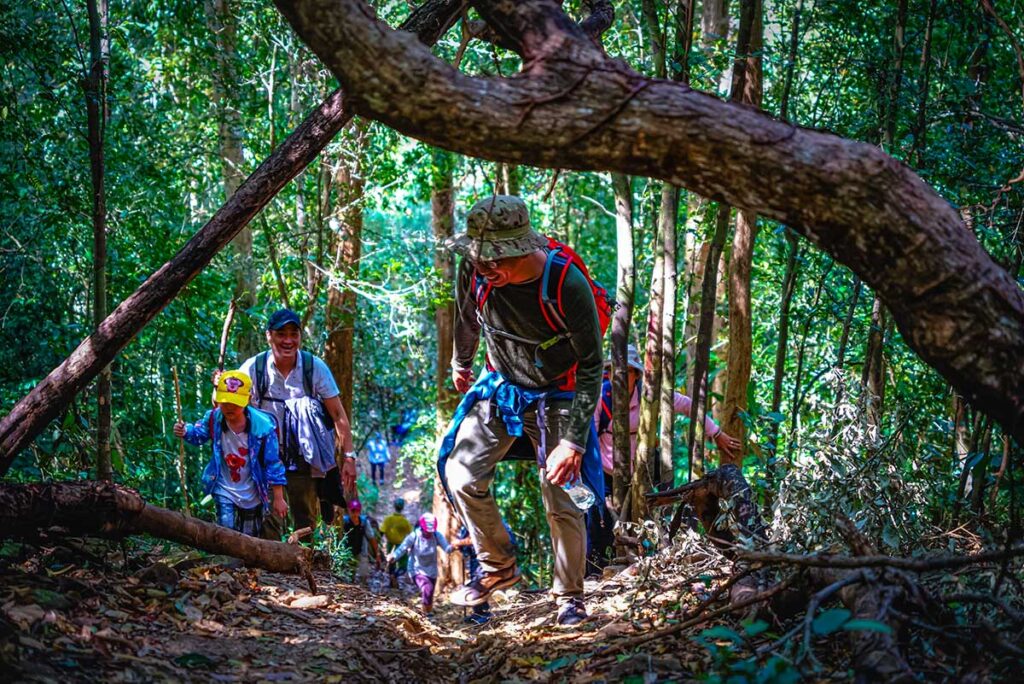
Bu Gia Map National Park is a stunning nature reserve that showcases the diverse flora and fauna of Binh Phuoc. It’s one of the best things to do in Binh Phuoc, perfect for hiking, birdwatching, and exploring dense tropical forests. This park also holds historical significance as it was a strategic base during the Vietnam War.
2. Dak Mai Waterfall

Located just 4 km from Bu Gia Map National Park, Dak Mai Waterfall is a must-visit. The waterfall cascades approximately 10 meters and stretches over 50 meters wide. In the dry season, the water is clear and calm, while the rainy season transforms it into a roaring, coffee-colored stream. You can bathe in the pools at the base or admire the unique rock formations carved by centuries of water erosion. Convenient access with paved roads and iron steps makes it suitable for all visitors.
3. Phen – Hoa Mo Waterfall
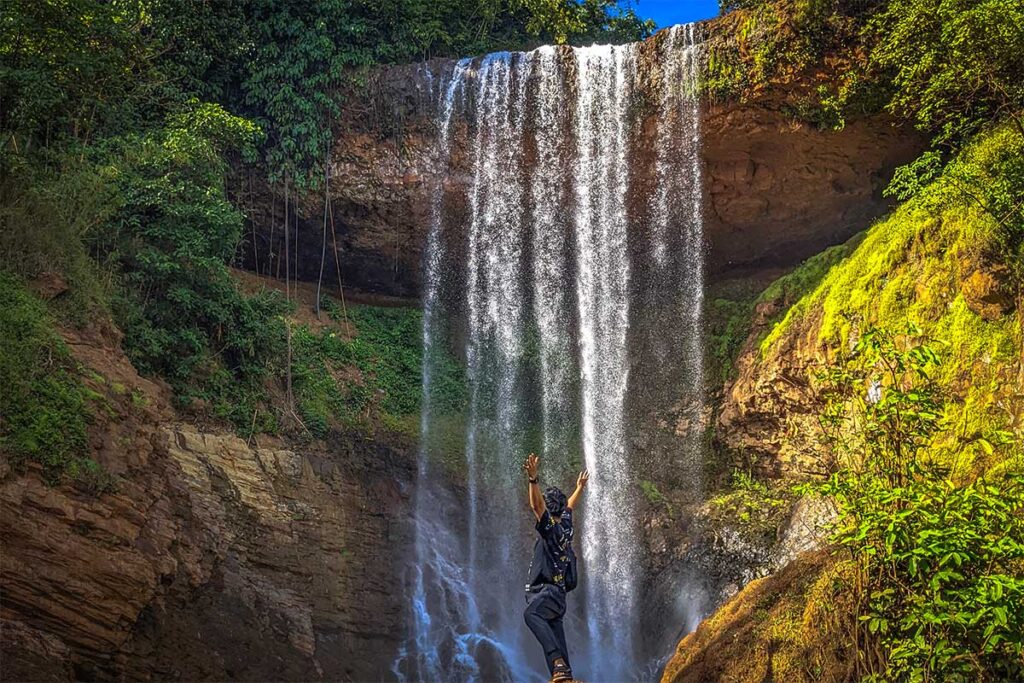
Phen – Hoa Mo Waterfall offers a secluded natural retreat surrounded by vibrant greenery. During the rainy season, its roaring waters create an impressive spectacle. Visitors can explore a smaller waterfall downstream, ideal for families with children. Accessible via a trail through the forest, this spot is perfect for adventurous travelers seeking tranquil beauty.
4. Dung Waterfall

This wild and majestic waterfall is especially captivating during the rainy season when its powerful flow creates dramatic views. Although less developed, Dung Waterfall is easily accessible and close to Bu Dang market. Visitors should be cautious of slippery rocks and bring provisions, as amenities are limited.
5. No. 34 Waterfall
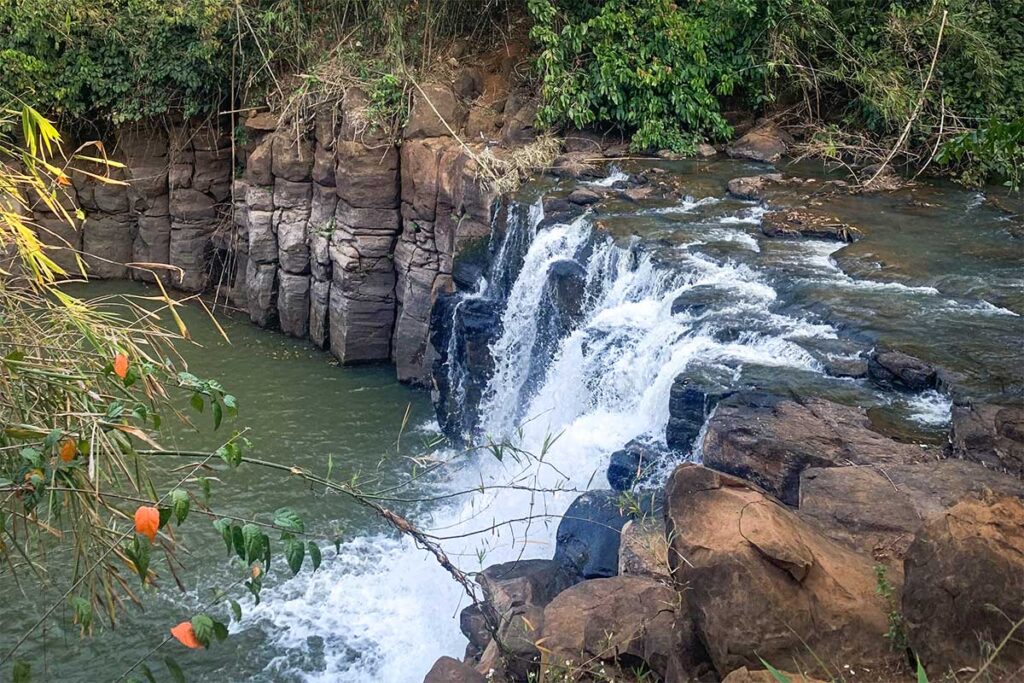
No. 34 Waterfall is a picturesque spot, ideal for photography and picnics. Surrounded by lush greenery, the area offers clear pools for swimming and plenty of space for camping. The entrance features a scenic slope and parking facilities, making it convenient for families and small groups.
6. Keng Waterfall
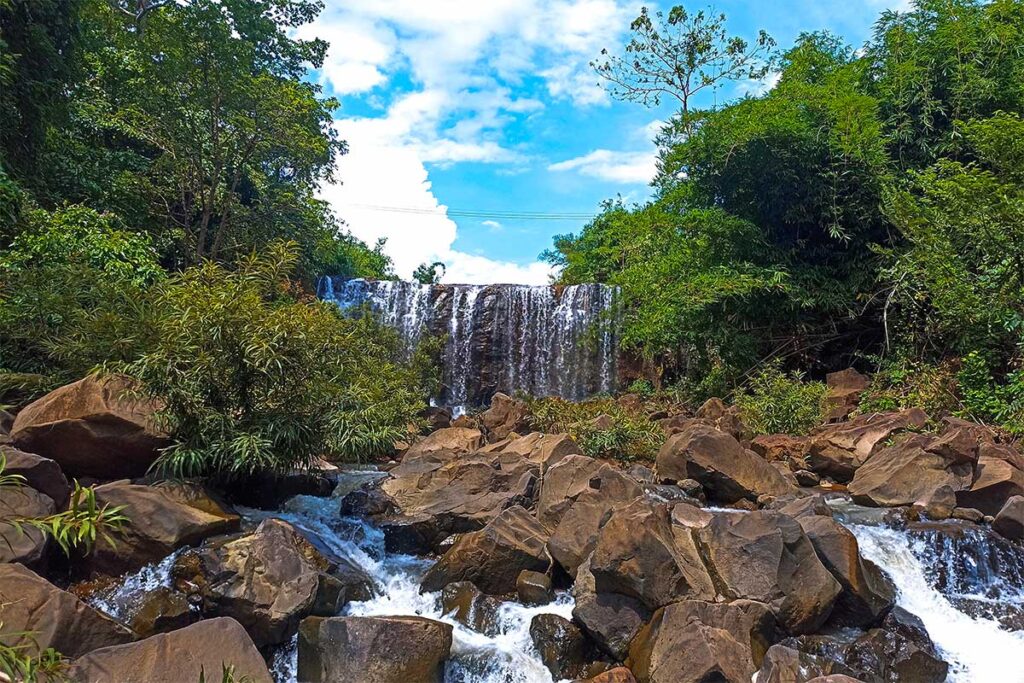
Keng Waterfall is a hidden gem that shines during the rainy season when the water flow is at its peak. With its poetic stream and untouched environment, it’s a peaceful escape from urban life. While accessible by car or motorbike, the narrow roads are best navigated with caution.
7. Bom Bo Ethnic Village

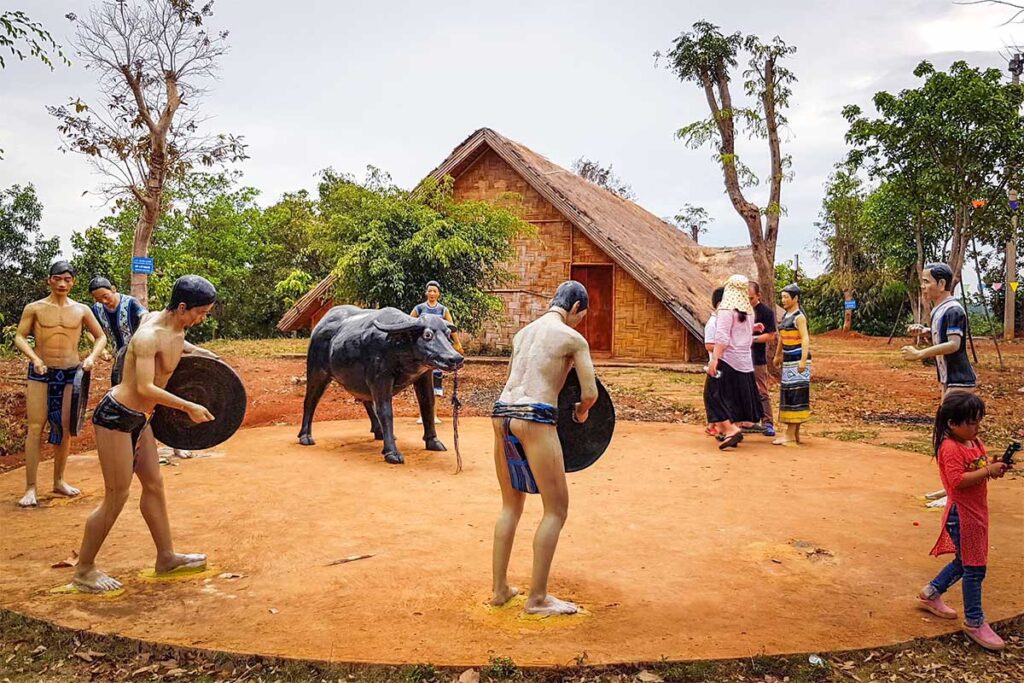
Bom Bo Village is home to the Stieng ethnic group, offering visitors an opportunity to immerse themselves in the local culture. Learn about traditional crafts, music, and daily life in this vibrant community.
8. Ba Ra Mountain

Ba Ra Mountain is a popular hiking destination offering panoramic views of the surrounding countryside. A road up the mountain provides easy access to its summit, where you can enjoy breathtaking sunrises and sunsets.
9. Bu Lach Grassland
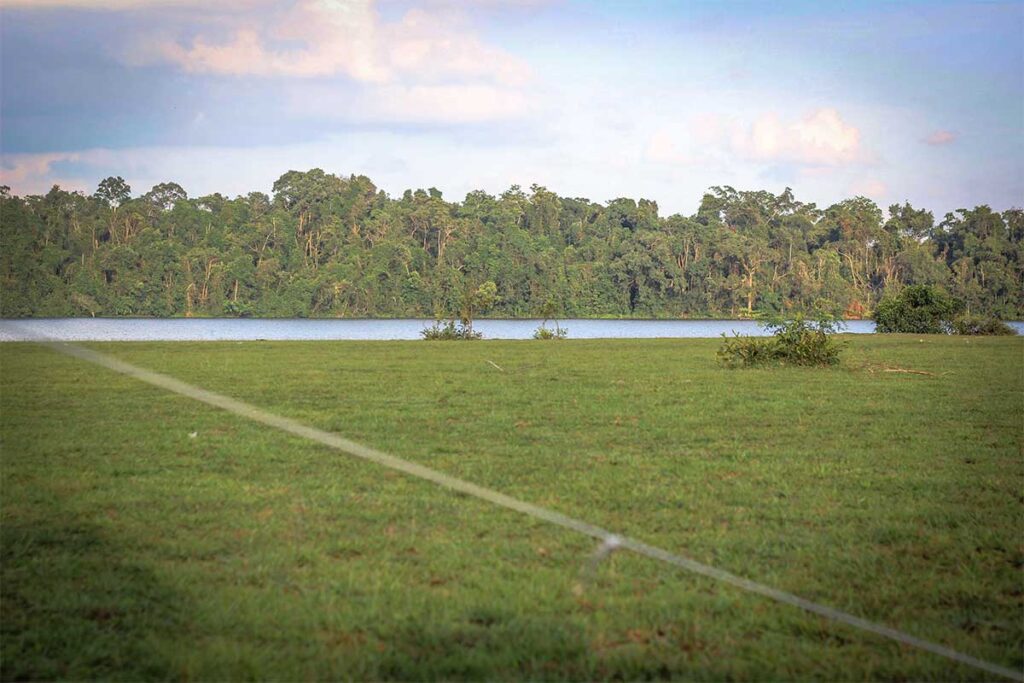

This vast grassland, surrounded by primeval forests, is a peaceful spot for picnics, camping, and nature walks. During the blooming season, purple myrtle flowers dot the area, creating a picturesque setting. A nearby lake and waterfall (Thác Voi, meaning Elephant Waterfall) adds to the charm of this eco-tourism site.
10. Rubber plantations

Binh Phuoc is famous for its rubber and coffee plantations. Drive along scenic routes lined with trees or visit ecofarms to learn about the cultivation process. Some plantations also feature farmstays and cafes for a relaxing experience.
11. Ta Thiet Base
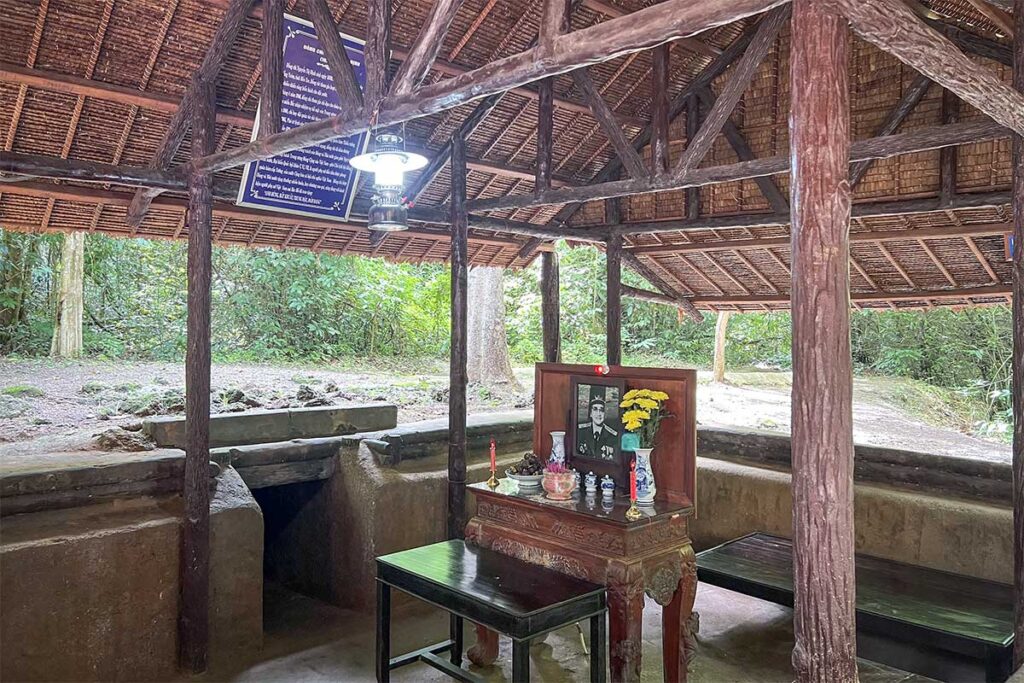
A significant historical site, Ta Thiet Base served as a key strategic location during the Vietnam War. Explore its tunnels, trenches, and other remnants to gain insight into Vietnam’s history and the base’s role in the Ho Chi Minh Campaign.
Where to stay in Binh Phuoc
While Binh Phuoc is not a major tourist destination, it offers a variety of local-style accommodations. For a unique experience, staying in the countryside near nature is recommended rather than in Dong Xoai, the main town.
For nature enthusiasts, you can arrange accommodation through the Center for Propaganda, Tourism, and Conservation Rescue of Bu Gia Map National Park. Options include staying in rooms or camping within the forest, with prices starting at 100,000 VND per person per night.
Travel itinerary for Binh Phuoc
This two-day itinerary showcases the best things to do in Binh Phuoc, from waterfall hopping to exploring Bu Gia Map National Park.
Day 1
Starting Point: Dong Xoai
Begin your adventure with a scenic drive towards Bu Gia Map National Park, stopping at waterfalls along the way. While it’s technically possible to visit all waterfalls in one day, skipping one or two allows for more relaxed exploration and short hikes.
- Keng Waterfall: Enjoy the picturesque scenery and tranquil setting.
- No. 34 Waterfall: Ideal for photography and picnics.
- Bom Bo Village: Experience local culture and learn about traditional crafts.
- Phen Hoa Mo Waterfall: A hidden gem with lush surroundings.
- Dak Mai Waterfall: Admire its impressive cascades and unique rock formations.
Evening: Arrive at Bu Gia Map National Park for an overnight stay, either in a room or camping.
Day 2
Morning
- Explore the Bu Gia Map National Park. Immerse yourself in its rich biodiversity with trails, wildlife sightings, and serene forest landscapes.
Afternoon
- Depart from the park and continue to your next destination, such as Ninh Binh, Ho Chi Minh City, or another nearby attraction.

